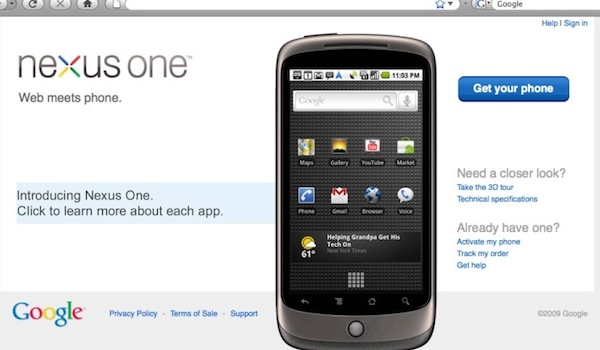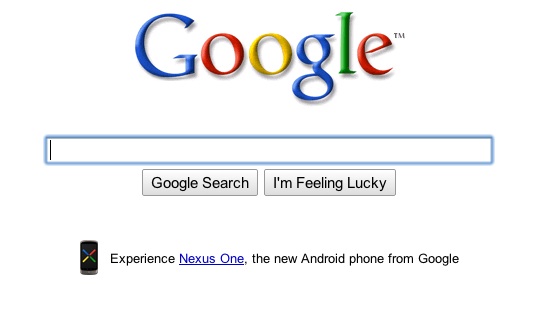Over this last weekend, some Adwords users have received a warning email from Google stating that their landing pages are of poor quality and do not comply with Google’s landing page and site quality guidelines.
Some users have already been banned outright.
Here’s an automated response from one user who queried the ban:
As the email you received on Friday explained, your account has been suspended due to multiple submissions of poor quality landing pages. We are unable to revoke your account suspension, and we will not accept advertisements from you in the future
Check out the discussions at Webmasterworld and the Google AdWords Forum. Has there been a change in quality standards? A new rule? Perhaps a harder enforcement of a previously lax guideline?
Naturally, webmasters are irate. There appears to be no official comment from Google, but we’ll keep you posted.
In the meantime, let’s take a look at Google landing page quality standards.
Adwords Landing Page Guidelines
Google introduced a quality score back in 2005. This quality score covered various data points, including the ad text and click through rates, and helps ensure the user finds what they’re look for.
Soon after, Google added a landing page score to the mix.
This score evaluated the landing page in terms of relevance i.e. the page should reflect the promise made by the ad.
The text also must be original, so that users aren’t seeing the exact same landing page if they click on different ads. There should not be excessive pop-ups, or any means to “trap” the user i.e. disabling the back button.
In many ways, these policies mirror the type of sites Google ranks in the organic serps, relevancy to the keyword term being the primary requirement.
Here are Google’s official landing page standards.
Now, Google uses an automated bot to determine compliance, yet Google doesn’t provide a means for webmasters to test their pages, presumably because they want to keep their scoring mechanisms a secret.
How Can You Tell If Your Landing Page Is Optimized For Google’s Quality Standards?
Dave Davis has an excellent tutorial on SearchEngineJournal.
Check out W3 Semantic Extractor and the Google site related keyword tool. What better way to get information about what Google thinks your site is about then using a tool designed by Google to figure out exactly what your site is about?
In summary, you need to ensure your page contains the same or similar terms as appear in the Adwords ad, and these terms need to be displayed prominently on your landing page in order to comply in terms of relevance.
If you go one step further and test your pages using the site related keyword tool, and the semantic extractor, you stand a good chance of achieving a high quality score.
Google’s Tips to Improve Quality Score
Google, as usual, require you to read between the lines. Let’s examine some of their guidelines more closely:
Link to the page on your site that provides the most useful and accurate information about the product or service in your ad.
Ensure the landing page and the ad are identical in terms of subject matter. Click-backs can affect your quality score, so make sure you repeat the keyword term high up on the page, in bold, in your copy. This also helps reaffirm to the user that they’ve arrived at the right place.
If your site displays advertising, distinguish sponsored links from the rest of your site content
Your page can’t consist mostly of ads. I’ve seen a lot of pages getting away with this, however.
Try to provide information without requiring users to register. Or, provide a preview of what users will get by registering
Pretty obvious. Users typically don’t register for something unless they desperately want what you’re offering. There is a high likelihood they’ll click back if presented with registration as the only option.
In general, build pages that provide substantial and useful information to the end-user
That’s a big one. Google don’t want just an ad, and certainly not a misleading one. They want information, much the same as they require in the organic search results. Focus on providing user utility and you can’t go too far wrong.
If your landing page consists of mostly ads or general search results (such as a directory or catalog page), you should provide as much information as you can beyond what your ad describes. For example, if your ad mentions <’Free travel information,’ your landing page should feature free travel information (versus links to other sites that do).
Your page should be an informative destination in itself. Of course, you need to balance the commercial imperative – making a conversion – with an informational one.
You should have unique content (should not be similar or nearly identical in appearance to another site). For more information, see our affiliate guidelines.
As mentioned, earlier, Google will want to avoid showing the same page to users if they happen to click multiple ads. It’s not hard for Google to spot duplicate content, so make sure your text is original.
Increase value & customer satisfaciton through using different strategies. To avoid duplication, consider various angles. i.e. instead of talking about the product itself, provide a “how to solve a problem” page for users. This how-to, of course, will recommend the product in question. Tell a story about using the product, provide unique testimonials, etc. Avoid cutting and pasting from the suppliers website.
What Service?
Finally, a lot of the emails concerning the banning appear to have been sent to affiliates, both direct-to merchant and otherwise. There are some big spenders in there, so it looks like Google is tightening the noose on the middle man, once again.
It’s easy to understand the frustration, given the vagueness, and neatly summed up by a WebmasterWorld poster:
You buy a laptop for $1K from HP,DELL, or IBM. This laptop has much lower margins than sending a few bytes over the wire. Yet, if you have a problem you expect, and you will be able, to contact someone in support via toll-free phone, live chat or email to resolve the problem. If the result is not satisfactory, you can get the problem escalated to a case manager or eventually executive support. At some point someone with sufficient *authority* to fix your particular problem will respond.
But, if you spend $100K on ads, the best you can get is a vague automated email.
Heh. Makes you wonder what some of these pages look like? Anyone got an example of a banned page they care to share?





